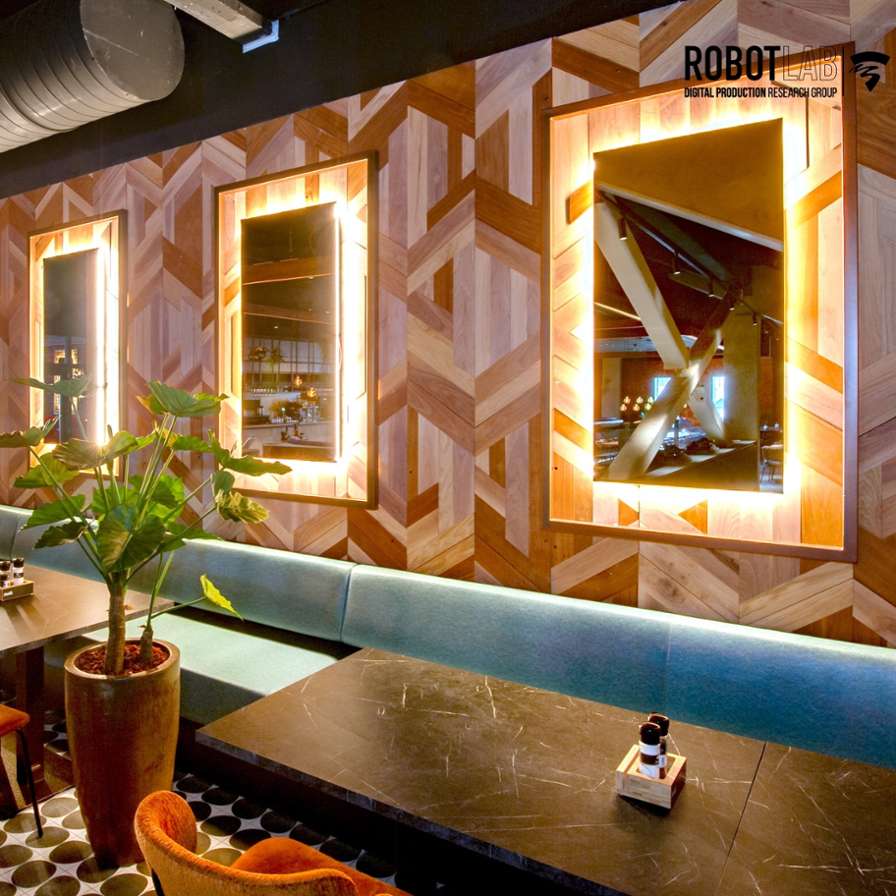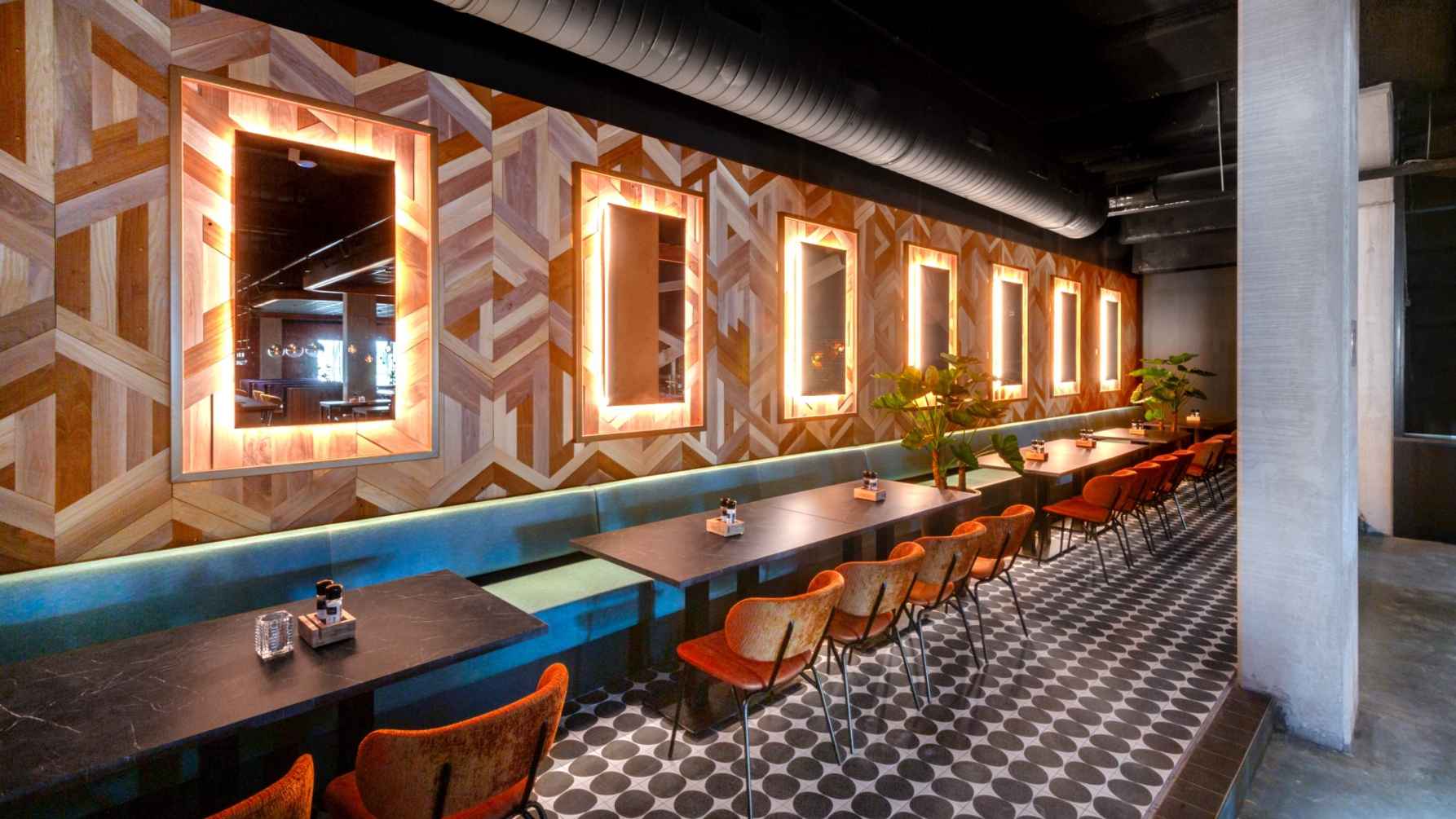Robot Lab Designs Reclaimed Wood Cladding for Bowling Alley

It is the true eye-catcher of the restaurant at Bowling Leeuwarden: the wall with the wooden panels. The panels were designed at the Robot Lab of the Amsterdam University of Applied Sciences (AUAS) and are entirely made from residual wood. “With this project, we showcase what is possible: designing beautiful hospitality interiors and simultaneously, advancing the circular transition”, says Marta Malé-Alemany, Associate Professor in Digital Production and head of the Robot Lab.

Reusing Residual Wood
The Robot Lab created the panels in collaboration with partners Heineken Interieur Design, Derako, and Timmerfabriek Visser. This collaboration emerged from the 2-year applied research project Circular Wood 4.0, completed in January 2025. In this project, the Robot Lab explored how digital design and robotic production can help create impactful applications for hospitality interiors, made from residual wood. “I am very pleased that these three companies joined us in this adventure,” says Malé-Alemany. “We need pioneers like them to see the possibilities, make wood reuse the norm and help accelerate the circular transition.”
Digital Design and Robotics
Currently, leftover wood often ends up being burned or turned into chipboard, as it's too labor-intensive to process large, varied batches. Valuable material thus becomes waste - exactly what the circular economy aims to avoid. But digital design and robotics now make wood reuse a viable and interesting alternative. To demonstrate this in practice, the Circular Wood 4.0 project explored several case studies, including interior wall coverings with unique wooden wall panels. This case was recently realized in practice by the four partners, at the Bowling Alley in Friesland.
When Heineken Interieur Design was commissioned to design the interior of this new space, they proposed cladding one wall in the restaurant with panels made from residual wood. “This project offered a great opportunity to give leftover materials a second life,” says Malé-Alemany. The residual wood was supplied by Derako, a manufacturer of wooden ceiling systems.

Algorithm Designs Ideas
To create the design, the Robot Lab used a ‘design from availability’ methodology, in which making use of the available material was the critical starting point. Researchers began with documenting and importing all pieces of available wood into a database. This database contained detailed information about each piece: wood species, dimensions and other features. Based on this data, a custom-made algorithm generated ideas for the wall panel design.
“This algorithm doesn’t just analyze the wood itself, it also considers the space in which the panels will be placed,” explains Zach Mellas, researcher at the Robot Lab. “The designer can also choose between different panel shapes, like hexagons or squares, and infill patterns, ranging from clean lines to spiral structures.”

From Digital to Physical
To execute the design, the Robot Lab collaborated with Timmerfabriek Visser. They operate a large CNC machine, controlled by a computer, to process materials. This machine cut the reclaimed wood precisely to size, following the digital panel design.
“To fabricate with their machine, we developed a specific instruction code at the Robot Lab,” says Mellas. “Each piece of wood requires unique cutting instructions.” Once the components were cut, the wall panels were assembled. This was still done manually, but in the future robots could collaborate with humans or take over this process, to streamline the assembly and upscale production, and resulting impact.
From Pilot to Future Vision
“This was a great pilot project,” says Malé-Alemany. “I'm proud that our methodology is finding its way into practice. Hopefully, more pilots will follow, and eventually large-scale applications. The hospitality industry is enormous, and most venues renew their entire interiors every seven years. This high turnover makes this a major opportunity to increase the reuse of wood, and the positive impact of digital production for circularity.”

Digital Production Research Group
Within the Circular Design and Business research group, Associate Professor Marta Malé-Alemany is engaged in the research line Digital Production. She investigates how advanced design and manufacturing technologies - also called "digital production" - can help address societal issues. Home base of the Digital Production Research Group is the Robot Lab.